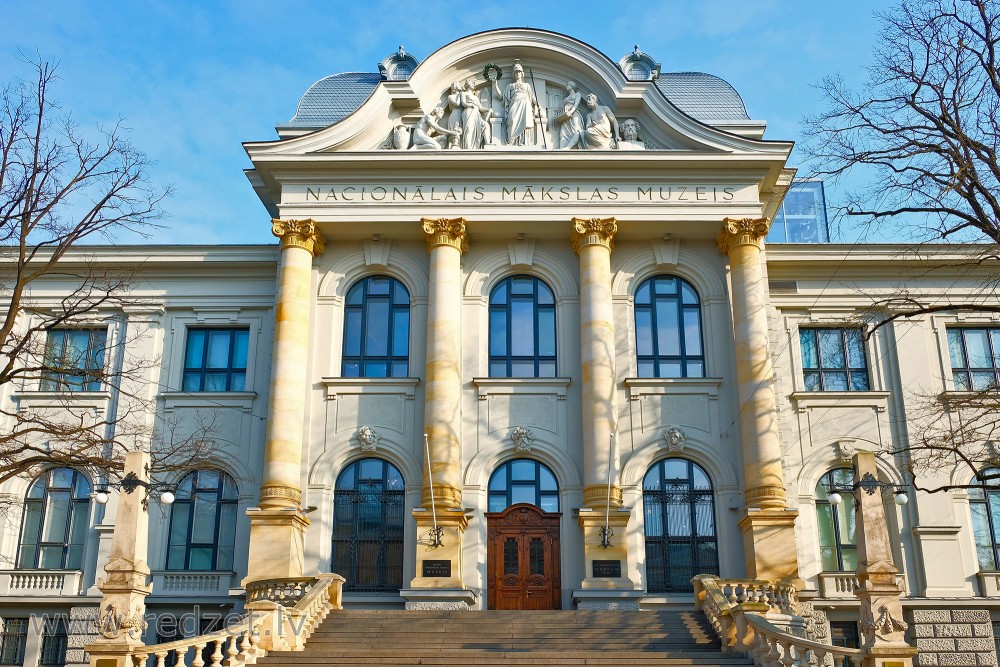Latvian art and contemporary creators have emerged from a rich history of cultural identity and national resilience. During the 19th century, artists like Janis Rozentāls and Vilhelms Purvītis laid the foundation of national style. Their works often celebrated rural life, nature, and Latvian folklore. Romanticism and realism shaped early Latvian expression. In these early stages, art served not just aesthetics but also national awakening. Folk crafts such as weaving and ceramics helped shape Latvia’s early visual identity. These traditions connected communities and preserved cultural memory through generations. Artists were storytellers, documenting Latvia’s social changes and historical struggles.
Soviet Influence and Post-Independence Expression
The Soviet period imposed restrictions, yet Latvian artists found subtle ways to express their visions. Many used symbolism and coded language to explore themes of identity and resistance. Despite censorship, creativity thrived underground in studios and private salons. After independence in 1991, Latvian art exploded with new energy and freedom. Artists experimented with installations, video, and conceptual forms. Galleries emerged in Riga and other cities, offering new spaces for dialogue. The collapse of Soviet barriers allowed Latvian artists to connect globally. Contemporary creators began reflecting both local issues and international trends in bold, fresh ways.
-
Artists used hidden messages to resist censorship
-
Independence brought artistic freedom and global reach
-
Experimental forms like video and conceptual art gained popularity
-
Riga became a hub for new galleries and artists
Where to See Latvian Art Today
Latvia now boasts several institutions dedicated to preserving and promoting national and contemporary art. The Latvian National Museum of Art in Riga holds one of the largest collections in the Baltics. The Art Museum RIGA BOURSE showcases global art alongside modern Latvian works. Additionally, the Arsenāls Exhibition Hall focuses on contemporary installations and video art. Small independent galleries across Riga highlight emerging talent and innovative media. Art fairs, like RIBOCA (Riga International Biennial of Contemporary Art), draw international attention. These venues show how seriously Latvia supports its cultural growth. Art education also thrives in schools like the Art Academy of Latvia.
-
Must-visit museums:
-
Latvian National Museum of Art
-
Art Museum RIGA BOURSE
-
Arsenāls Exhibition Hall
-
-
Art fairs:
-
RIBOCA
-
-
Top art school:
-
Art Academy of Latvia
-
Contemporary Creators to Watch
Many Latvian artists today are gaining international recognition for their unique perspectives and techniques. One name to know is Kristaps Ancāns, known for playful, philosophical installations blending tech and absurdism. Katrīna Neiburga uses video and sculpture to explore gender, memory, and public space. Andrejs Strokins works with photography, capturing surreal urban details from post-Soviet life. Likewise, Ella Mežule’s minimalist ceramics bring Nordic and Latvian aesthetics together. Painters like Ritums Ivanovs explore digital portraiture using traditional techniques. Importantly, many creators are redefining what it means to be a Latvian artist in the 21st century.
-
Notable artists:
-
Kristaps Ancāns (philosophical installations)
-
Katrīna Neiburga (video and sculpture)
-
Andrejs Strokins (photography)
-
Ella Mežule (ceramics)
-
Ritums Ivanovs (digital portraiture)
-
-
Common themes:
-
Identity
-
Gender and memory
-
Urban culture
-
Technology and absurdism
-
Digital Art and the Future of Latvian Creativity
Latvian art and contemporary creators are quickly embracing digital innovation to expand their creative boundaries. Many young artists in Latvia now experiment with virtual reality, artificial intelligence, and 3D modeling. These tools help them build immersive experiences that connect with wider audiences. Thanks to online platforms and social media, emerging Latvian talent can now gain international attention more easily. Even NFT art has started gaining traction, linking Latvian creators to global blockchain art communities. Importantly, digital tools do not replace traditional art—they extend its relevance into the future. As technology advances, so does the way Latvian artists share stories and provoke thought. Clearly, Latvia’s digital art scene is thriving and promises a dynamic creative future.
Street Art and Public Installations
Latvia’s art scene goes beyond museums and galleries—its streets are also filled with creativity. Riga’s neighborhoods feature bold murals and experimental installations. Organizations like Riga Last Thursdays organize monthly art walks and outdoor exhibitions. Artists are reclaiming public space to make art accessible to all citizens. Sculpture parks and temporary installations bring contemporary ideas into daily life. Street art often reflects political commentary, humor, or historical memory. In this way, art integrates with urban life and invites community interaction. Moreover, city-sponsored projects help young artists gain exposure outside traditional venues.
-
Where to experience public art:
-
Street murals in Riga
-
Riga Last Thursdays art walks
-
Sculpture parks
-
-
Themes in public art:
-
Social commentary
-
Humor
-
Community interaction
-
Art and Sustainability
Modern Latvian art increasingly addresses global challenges, especially environmental concerns and sustainability. Artists use recycled materials and natural dyes in their work. Installations explore themes like climate change, waste, and biodiversity loss. Many creators partner with NGOs to raise awareness through visual storytelling. For example, some exhibitions focus on Latvia’s endangered forests or Baltic Sea pollution. Others use performance art to engage viewers emotionally. This merging of activism and aesthetics adds urgency to today’s Latvian art. It proves that art is not just for galleries—it’s a tool for change.
-
Common sustainability themes:
-
Climate change
-
Pollution
-
Deforestation
-
-
Sustainable practices in art:
-
Recycled materials
-
Natural pigments
-
Collaboration with NGOs
-
Women in Latvian Contemporary Art
Latvian art and contemporary creators include a growing number of influential female artists making bold contributions. These women explore powerful themes like gender identity, social justice, and cultural memory through painting, sculpture, and video. Artists such as Katrīna Neiburga and Elīna Brasliņa bring unique perspectives to Latvia’s evolving art narrative. Many female creators now lead exhibitions at key venues like the Latvian National Museum of Art and international biennials. Their work often blends tradition with innovation, using folklore, textiles, and modern technology in compelling ways. Importantly, Latvia fosters gender inclusivity through mentorship programs and open calls for emerging women artists. As more women take center stage, their voices reshape Latvia’s cultural identity with strength and originality. Clearly, women are vital to the future of Latvian contemporary art.
Latvian art and contemporary creators are redefining the national narrative with innovation, emotion, and fearless experimentation. From deep folk traditions to experimental installations, Latvia’s creative scene blends history with modernity. Art in Latvia isn’t just a reflection—it’s a response to social, environmental, and global challenges. Whether in a museum, a street corner, or a digital gallery, you’ll find Latvian artists making bold statements. These creators deserve international recognition, not just for their skill but for their vision. As Latvia continues evolving, so does its art—and it’s a movement worth watching.

